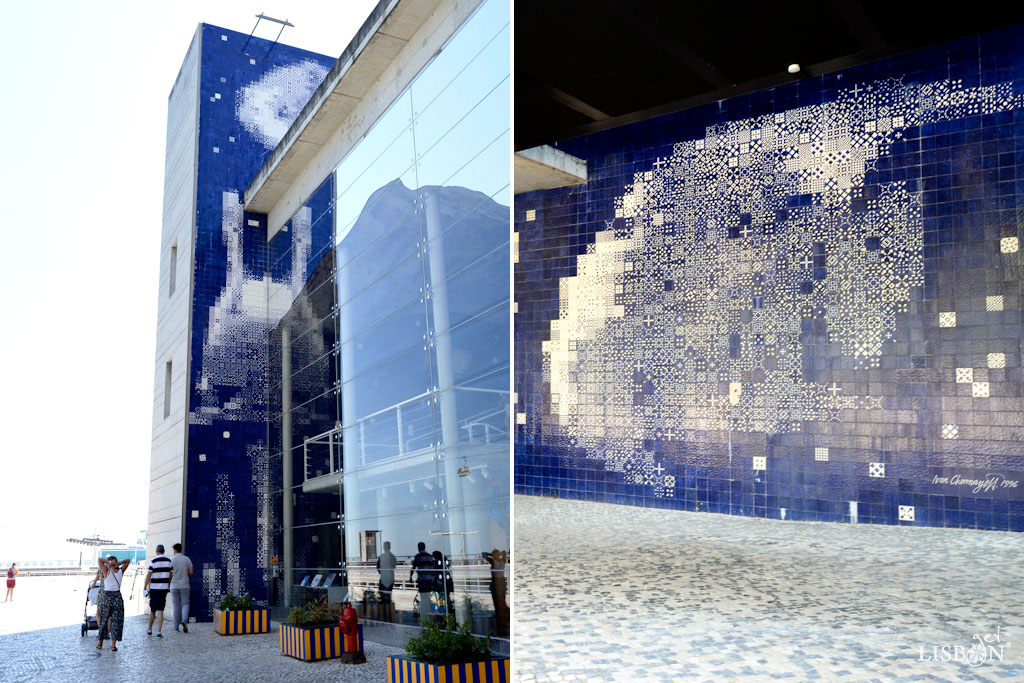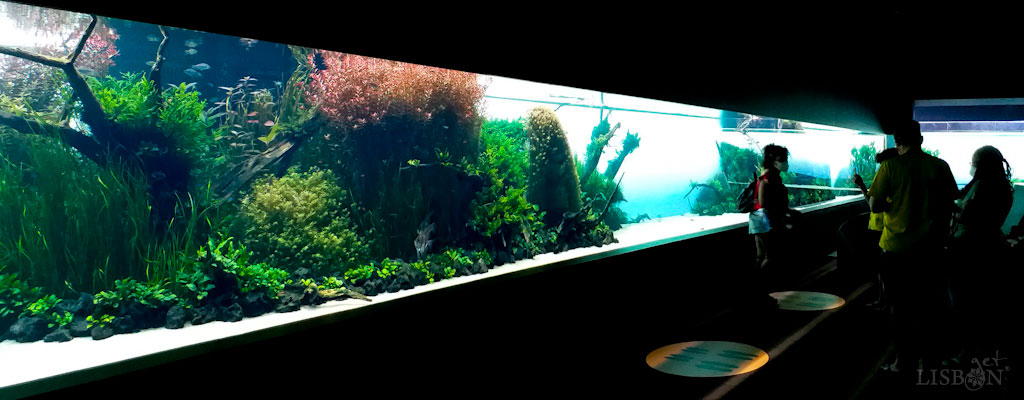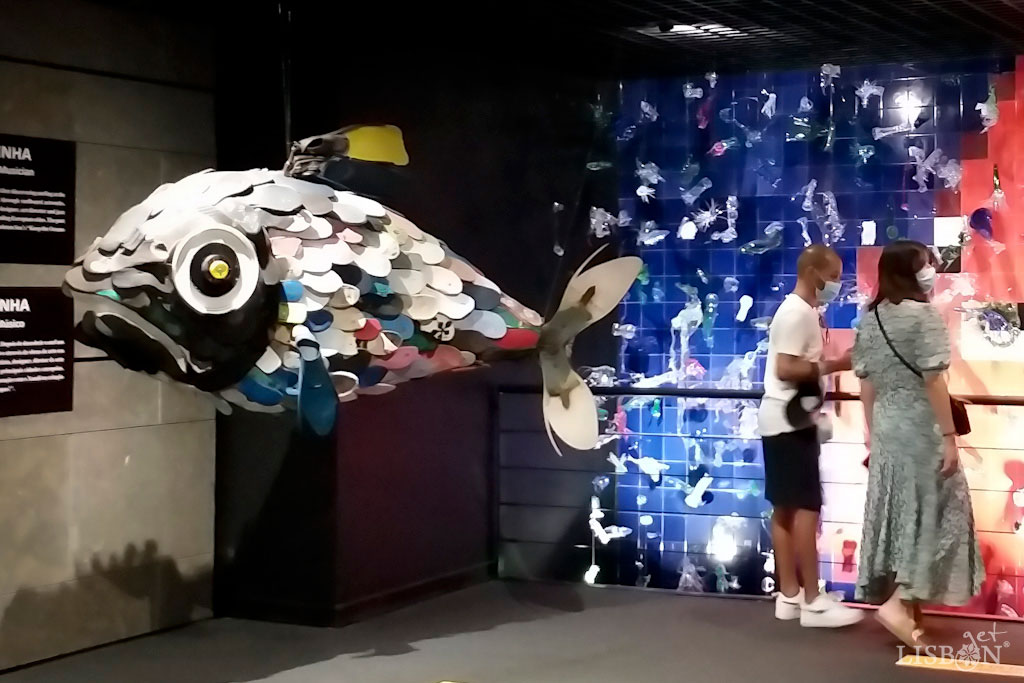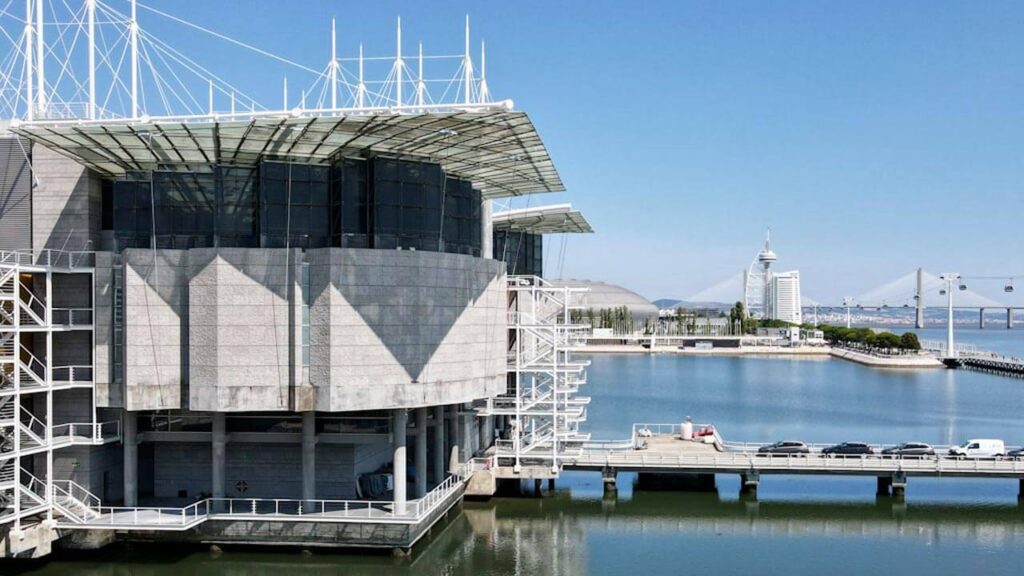Original article published on 17 September 2021
A visit to the Lisbon Aquarium is more than a simple discovery of the fantastic underwater world.
In addition to diving into the extraordinary beauty of the oceans and observing the countless marine species, we are faced with one of the most pressing issues of our time, the urgency of nature conservation.
In this space, we learn how everyone, including the little ones, can contribute to the balance of the planet that depends on forests and oceans.
From the Oceans Pavilion to the Lisbon Aquarium
The Lisbon Aquarium was built as part of the Lisbon World Exposition 1998 under the theme “The Oceans, a Heritage for the Future”, held at Parque das Nações, in the eastern part of the city.
The project, of the then Oceans Pavilion, was led by the North American Peter Chermayeff, a specialist in aquarium architecture. At the time, it was the largest in Europe and the second largest in the world, just behind the one in the Japanese city Osaka. Built on the Dock of Olivais, surrounded by water, it houses a central tank and four others separated by acrylic panels, creating the illusion that it’s a single aquarium.In 2011 Edifício do Mar, an extension of the Aquarium, was inaugurated. This project, by Portuguese architect Pedro Campos Costa, in addition to expanding the exhibition and support areas, establishes an important architectural connection with the main building. The creative work on the façade, by Atelier Cumella, stands out, with fan-shaped tiles in three different shades of white, which as a whole look like a covering of scales.

Between the two buildings there is a huge panel made up of around 55,000 tiles, by designer Ivan Chermayeff, brother of the architect who designed the Aquarium. Currently, the visibility of this extraordinary composition, produced by Constância Ceramic Factory, is not the best, due to the store and restaurant that are located in that space. It’s also possible to observe up close geometric elements, in white and shades of blue, but aquatic beings, such as algae, seahorses, sharks, turtles, fish…, which appear when observed from a distance, have become quite hidden.

The curious Portuguese pavement located next to the Aquarium and that extends to José Mariano Gago Square deserves to be highlighted. It shows fantastic marine beings, by the artist Pedro Proença, which bring us back to the imaginary present in the medieval maps and sea charts.
This work is part of a series of artistic creations for Expo ’98, which we featured and illustrated with aerial images in Surprising Portuguese Pavement in Parque das Nações.



Prepare to Submerge!
Currently, the Lisbon Aquarium has, in addition to the permanent exhibition, two temporary exhibitions: “Forests Underwater” which kickstarts the visit and that we’ll talk about with more detail below, and the artistic installation “ONE, The Ocean as you never felt it”.
Temporary Exhibition “Forests Underwater”

“Forests Underwater” is a nature aquarium, on display since 2015 in Edifício do Mar, designed by Japanese photographer and creator Takashi Amano, who passed away months after the conclusion of what was his biggest and most complex project.
Amano revolutionised the design of aquariums, introducing techniques and knowledge of the art of Japanese gardening. His projects recreate tropical forest environments that conform to the way nature builds its landscapes, combining them with a strong aesthetic component.
This piece of living art has the particularity of being in constant transformation, offering different panoramas over time.
We suggest you check out the interview with Takashi Amano where he talks, among other interesting aspects, about this work and his creations that were the result of his learning of nature.
Here are curious details about this aquarium from the RTP (the National Public broadcaster) report, as of its assembly.
- The largest nature aquarium in the world;
- U-shaped;
- Dimensions: 48 m long; 1.30 m height;
- 160 tons of weight;
- 160 000 litres of fresh water;
- More than 10,000 tropical fish of 40 species;
- 25 tons of rocks from Pico Island, Azores;
- 78 tree trunks from Scotland and Southeast Asian countries;
- Countless plants of more than 40 species and of various varieties, from Japan.
Permanent Exhibition “One Planet, One Ocean”
After diving in freshwater, the visitor enters the aquarium itself, through an overpass. Along the way, information panels show the various projects, supported by this organisation, related to the conservation of species.
Inside, a blue screen from the large aquarium marks the beginning of the visit.

The exhibition circuit is divided into two levels: terrestrial and underwater, where the habitats of the Atlantic, Antarctic, Pacific and Indian oceans are recreated.
At the terrestrial level, we can observe, among others, sea birds from the coastal areas of the North Atlantic, penguins from the Antarctic, otters from the Pacific that entertain visitors of all ages, and even the recreation of a coral area in the Seychelles islands of the Tropical Indian Ocean.

In between, you can find interactive information areas, art pieces and also an area for children, Casa do Vasco. All these aim to raise public awareness of the problems affecting the oceans and of the urgent need to adopt new attitudes to protect the environment.

Going down to the underwater level, we can observe countless marine species in the four habitats and in the central tank. There are also aquariums with a variety of species, from tropical fish and seahorses to jellyfish, sea anemones and corals…
In between you can find the exhibition “Amphibians. Interesting by nature” which alerts us to the danger of the extinction of these animals that play a very important role in the ecosystems’ balance, one of them being pest control.
The enthusiasm that marine animals bring us often leads us to neglect the information signs that are spread across the aquarium. But it’s worth paying some attention to them, as we can discover interesting facts like the following: did you know that the sea otter has the densest fur of the animal kingdom, with around 155,000 hairs per square centimetre? 😉
| Never miss another article | Subscribe here |
The Lisbon Aquarium in the Ocean Literacy
Global warming, overfishing, pollution, and plastic contamination are some of the factors that pose real threats to the marine ecosystems.
The Lisbon Aquarium plays an important role in ocean literacy and in raising public awareness of “their duty to conserve their natural heritage, by changing their behaviour.”
In addition to the exhibitions, the Lisbon Aquarium develops a wide range of activities for everyone: from educational activities, workshops for teachers, specialised guided tours for seniors or for the visually impaired, conservation projects, reproduction programs…, all in defense of the oceans. You can find this and other information on the Lisbon Aquarium’s website.
After visiting this wonderful underwater world, located in Lisbon, no one can remain indifferent to our individual responsibility for nature conservation. Small simple behaviours such as saving water, consuming fish from a sustainable source or using public transport daily, if practiced by everyone, can make a difference. 😉
Get your fast track entrance tickets here and avoid the long lines at the ticket office.
The project getLISBON has been very rewarding and we want to continue revealing the singularities of fascinating Lisbon.
Help us keep this project alive!
By using these links to make your reservations you’ll be supporting us. With no extra costs!
• Looking for a different experience? We can create a customised itinerary based on your interests. Contact us!
• Or if you prefer tours and other activities in various destinations, take a look at GetYourGuide.
• Save time and money with a flexible Lisbon Card!




